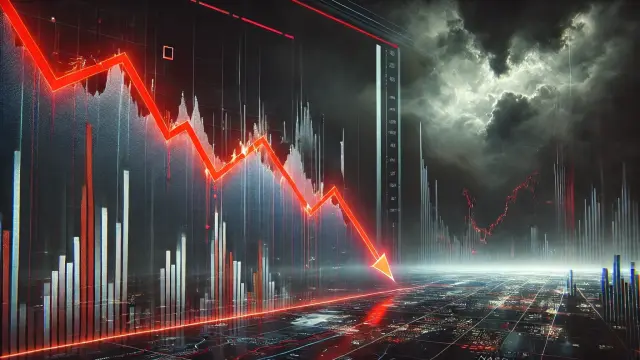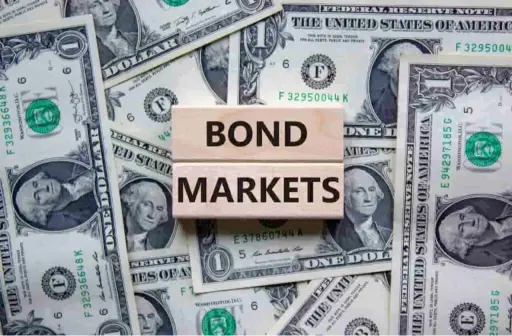Recent U.S. policy changes have played a crucial role in shaping the investment landscape. From tax reforms to regulatory adjustments, these shifts are creating new opportunities and challenges for investors. This article explores how these policies are driving investment trends across sectors
Understanding the Impact of U.S. Policy Changes on Investments
Recent changes in U.S. policies are reshaping the investment landscape in profound ways. From tax reforms to regulatory adjustments, these shifts have a direct impact on financial markets, investor behavior, and business growth. Understanding how these policies influence investment decisions is crucial for investors seeking to navigate a rapidly evolving economic environment. This article examines the key policy changes in the U.S. and explores how they are driving investments across various sectors.
1. Tax Reforms and Their Role in Investment Growth
The tax reform policies in the U.S. have significantly influenced both corporate and individual investment strategies. By reducing the corporate tax rate and providing incentives for capital investment, recent changes have encouraged businesses to reinvest their profits into innovation, expansion, and job creation. For investors, these reforms have opened new opportunities for returns, especially in sectors poised for growth.
-
Lower Corporate Taxes: The reduction in the corporate tax rate has given businesses more flexibility to allocate resources toward growth initiatives. This shift has also made the U.S. a more attractive destination for foreign direct investment (FDI), as companies seek to benefit from lower taxes and a more favorable regulatory environment.
-
Investment Incentives: Tax credits for R&D and depreciation incentives on capital investments have further spurred business activity. These policies have led to an uptick in investments in technology, renewable energy, and infrastructure projects, as companies are incentivized to make long-term capital expenditures.
2. Deregulation and Its Impact on Investment Climate
Recent deregulation efforts by the U.S. government have reduced barriers to entry for new businesses and industries, while also enabling existing companies to expand more rapidly. While deregulation has been controversial in certain sectors, such as financial services, it has created a more business-friendly environment that promotes investment.
-
Financial Deregulation: The rollback of certain financial regulations has allowed banks and investment firms to take on more risk, potentially leading to higher returns for investors. While this shift has raised concerns about financial stability, it has also led to more investment opportunities in the financial sector, particularly in high-yield bonds and other riskier assets.
-
Energy and Environmental Deregulation: Deregulatory moves in the energy sector, such as easing restrictions on oil and gas exploration, have spurred investment in fossil fuels and energy infrastructure. These changes have increased interest in energy stocks and related industries, despite the ongoing debate about environmental sustainability.
3. Trade Policies and Their Effect on Global Investment
Trade policies are another critical area where U.S. policies influence global investment trends. Recent shifts in trade relations, including tariffs and trade agreements, have had significant effects on global markets, especially in manufacturing, agriculture, and technology sectors.
-
Tariffs and Trade Wars: The imposition of tariffs, particularly on China, has caused disruptions in global supply chains but has also created new opportunities for U.S. manufacturers and investors in certain sectors. Companies looking to avoid tariffs have invested in reshoring operations or in alternative markets, creating investment opportunities in both domestic production and international markets.
-
Trade Agreements and Foreign Investment: The renegotiation of trade deals, such as the USMCA (United States-Mexico-Canada Agreement), has facilitated smoother trade relations with key partners, making the U.S. a more attractive location for investment. By improving trade terms, these agreements create more stability in cross-border investments and encourage international companies to invest in the U.S. market.
4. Technological Advancements and Investment Opportunities
One of the most exciting areas influenced by recent U.S. policies is the technology sector. Policies that encourage innovation in AI, cybersecurity, and renewable energy have opened up new avenues for investors seeking to capitalize on technological advancements.
-
AI and Automation: U.S. policies promoting AI research and development have made this sector a hotbed for investment. With government funding supporting AI startups and innovation hubs, venture capitalists are increasingly drawn to these opportunities, recognizing the potential for substantial returns.
-
Cybersecurity and Tech Regulation: As cyber threats grow, the U.S. government’s focus on cybersecurity has led to significant investment in cybersecurity firms and solutions. Companies that provide critical infrastructure protection or advanced security services are experiencing rapid growth, driven by both government policy and private sector demand.
-
Green Technology: With a renewed focus on environmental sustainability, recent policies favoring renewable energy and green technology have resulted in investments in solar power, electric vehicles (EVs), and energy-efficient technologies. These sectors are experiencing rapid expansion, with significant government backing in the form of subsidies, tax incentives, and grants.
5. The Role of Government Stimulus in Driving Investments
The government stimulus packages enacted during times of economic crisis, such as the COVID-19 pandemic, have had a dramatic effect on investment trends. These stimulus measures have not only provided immediate relief but have also spurred investments in specific sectors.
-
Stimulus and Consumer Spending: Economic relief programs have increased disposable income for many Americans, which in turn has boosted consumer spending. This has driven investment in retail, e-commerce, and technology companies that benefit from higher consumer demand.
-
Infrastructure Investments: The U.S. government has made significant investments in infrastructure as part of broader stimulus efforts. These investments have created opportunities for infrastructure-focused funds and companies involved in construction, engineering, and public works.
6. How U.S. Policies Are Shaping Long-Term Investment Strategies
Looking beyond immediate policy changes, the long-term direction of U.S. investment strategies is being shaped by broader shifts in public policy. Issues like healthcare, immigration, and demographic changes will continue to influence where and how investors allocate capital.
-
Healthcare Investment: Policies related to healthcare access, affordability, and innovation are driving investments in the healthcare sector. From biotechnology to healthtech, government support for medical research and affordable healthcare creates opportunities for investors in these industries.
-
Immigration Policies and Labor Markets: Immigration laws play a critical role in shaping the labor market and workforce availability. As U.S. immigration policies evolve, sectors reliant on skilled labor, such as technology and healthcare, will experience changes in workforce availability, impacting investment opportunities in these sectors














